Factor de Impacto:

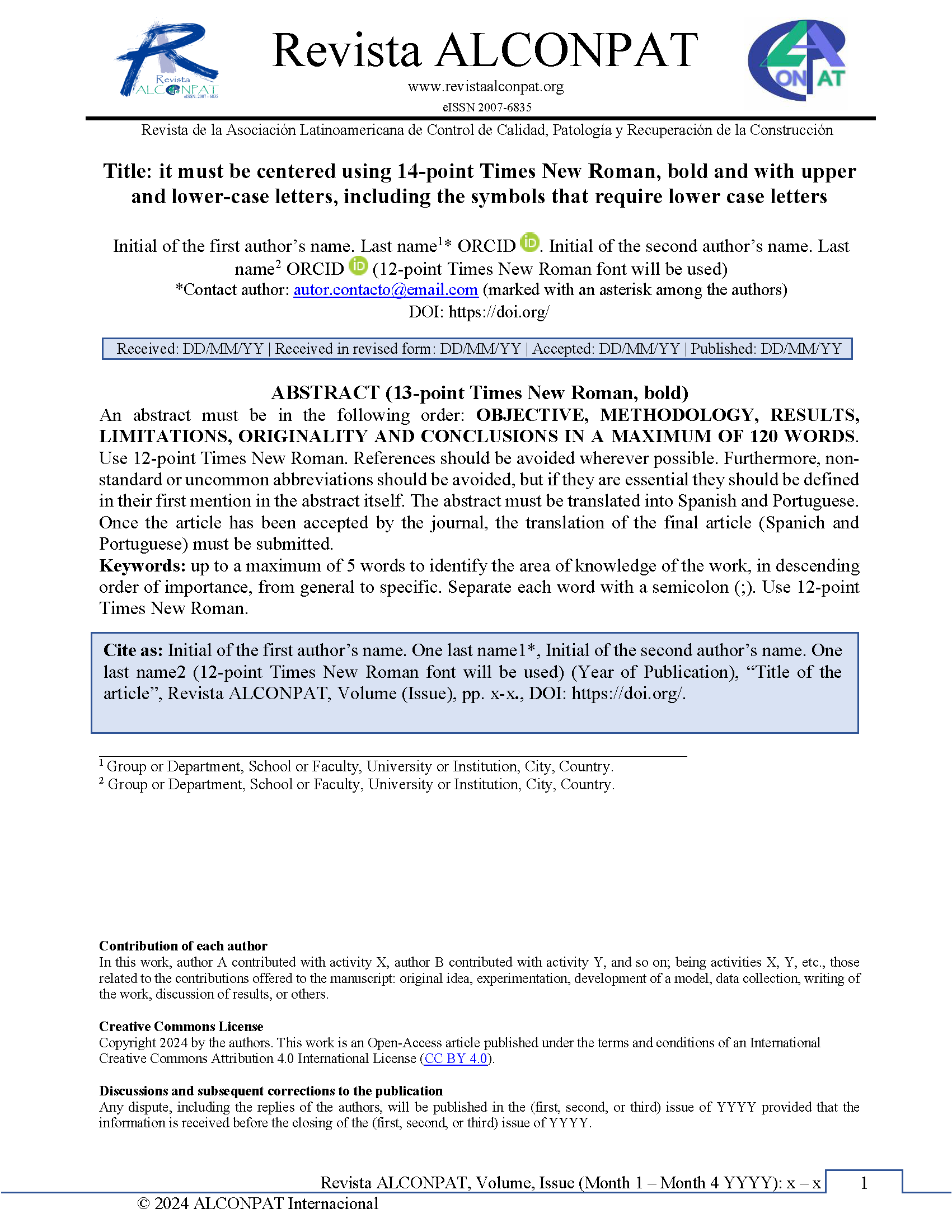
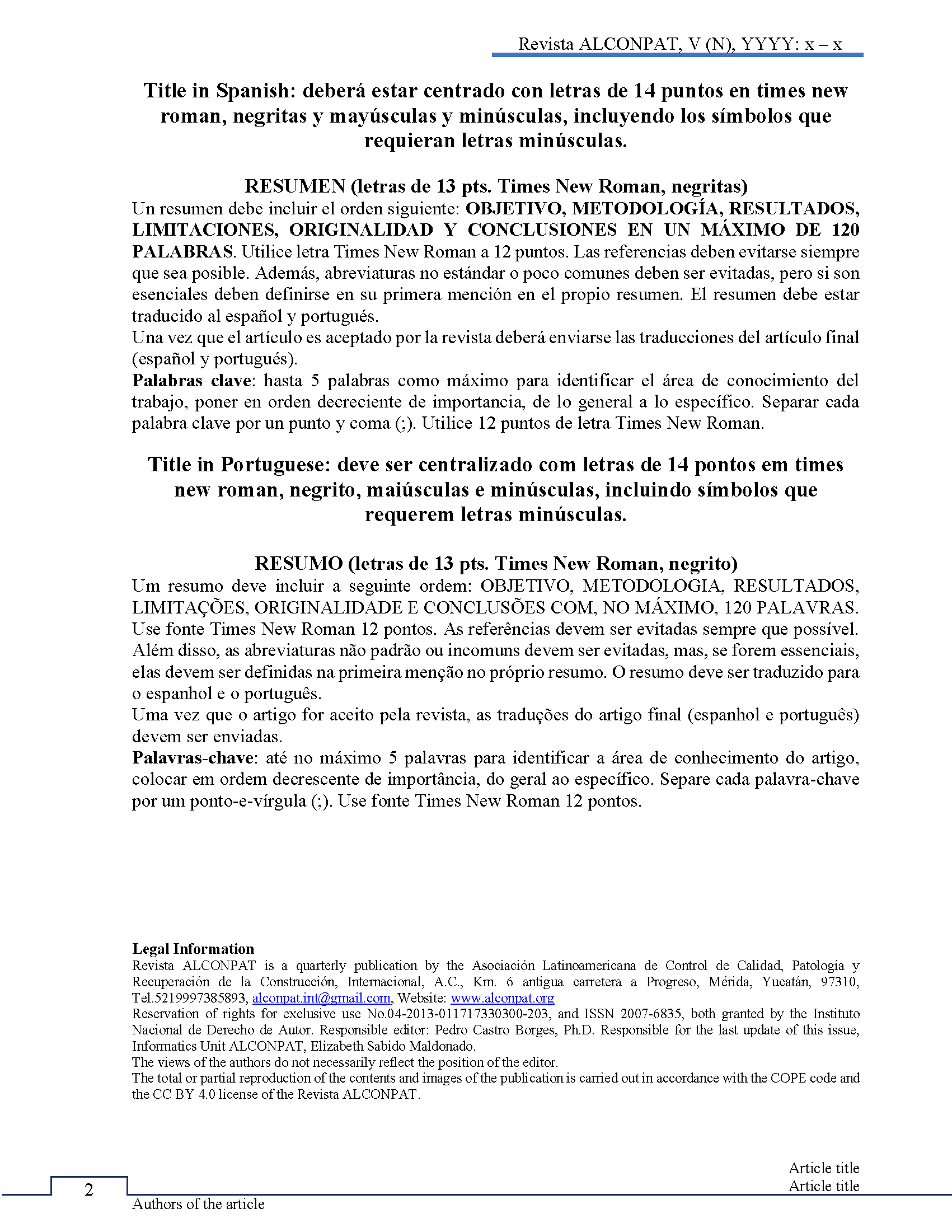
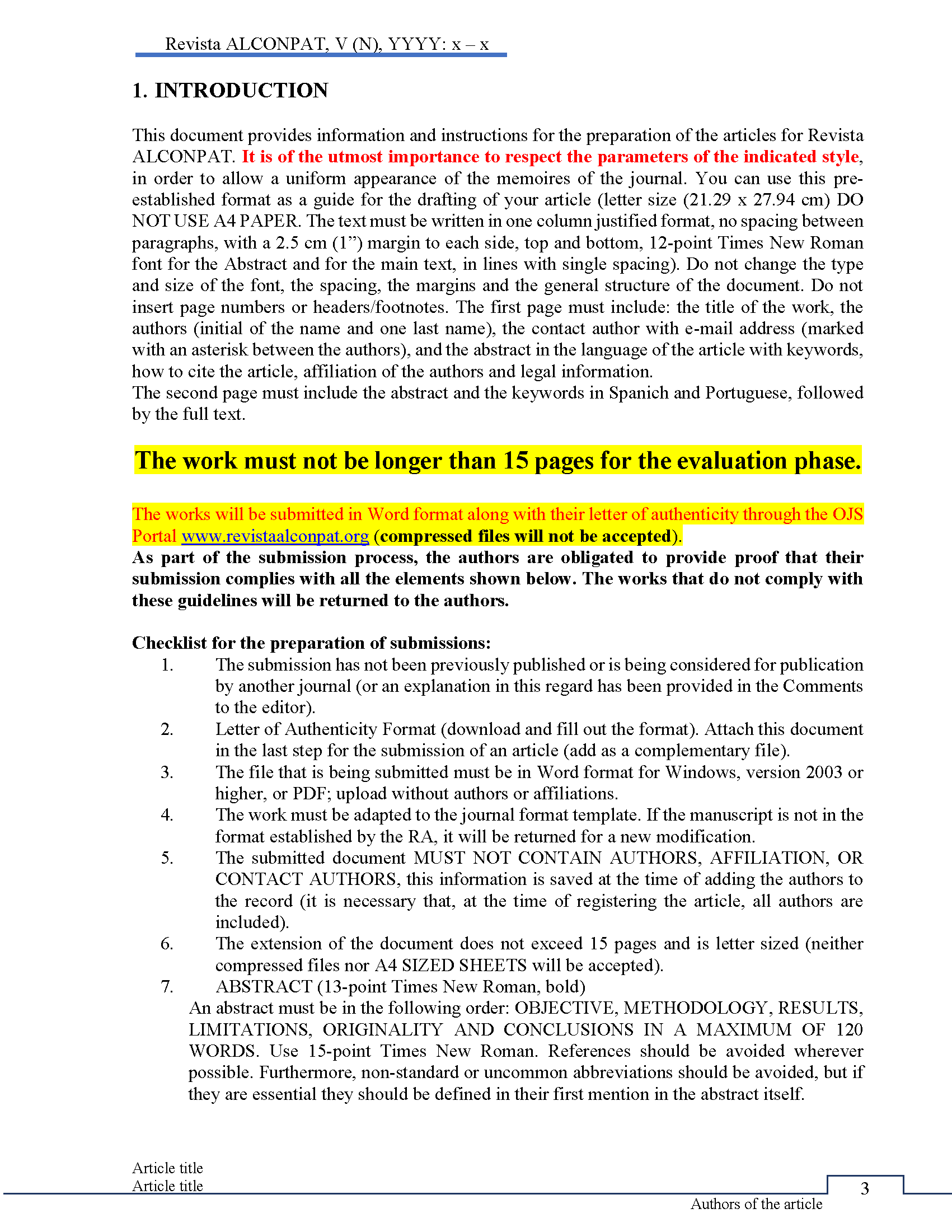
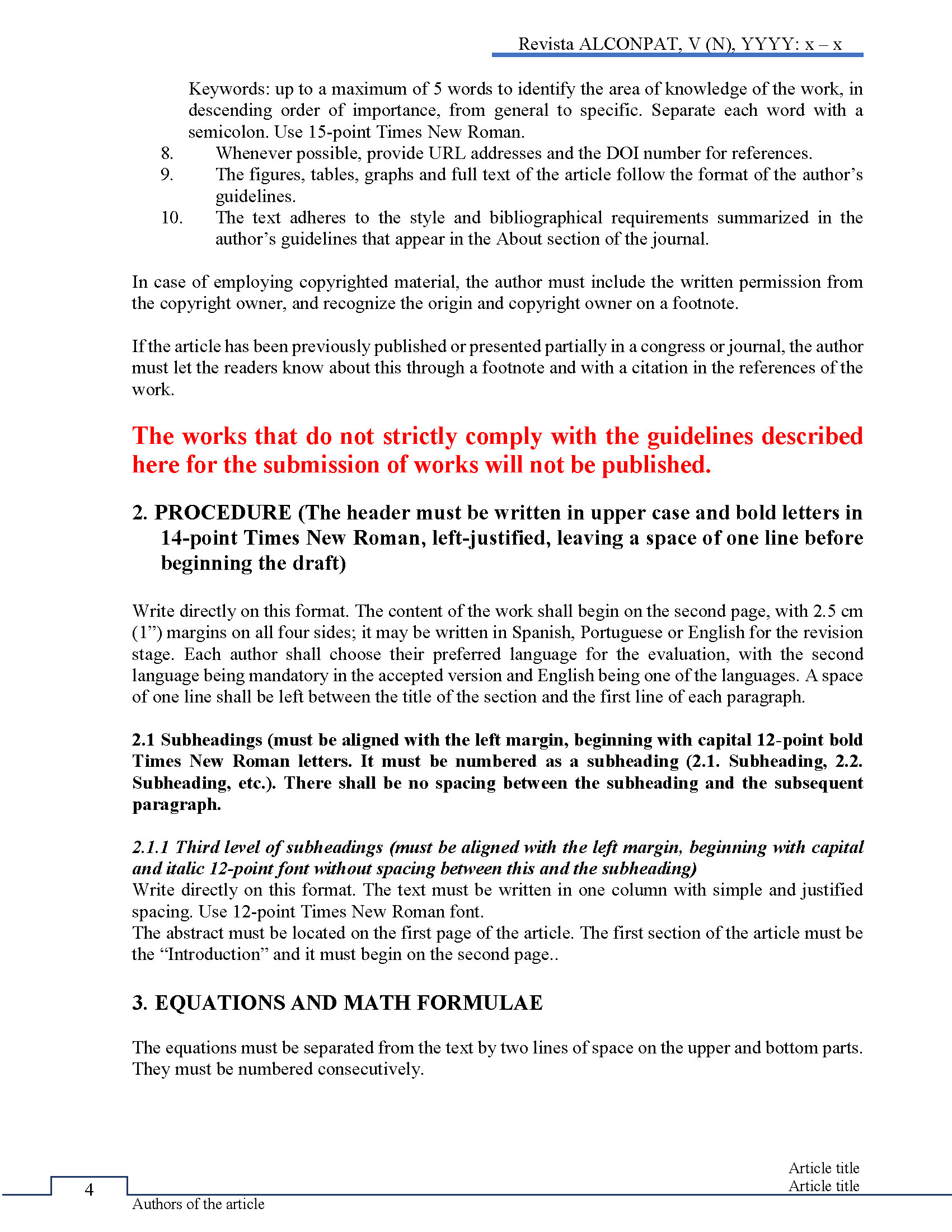
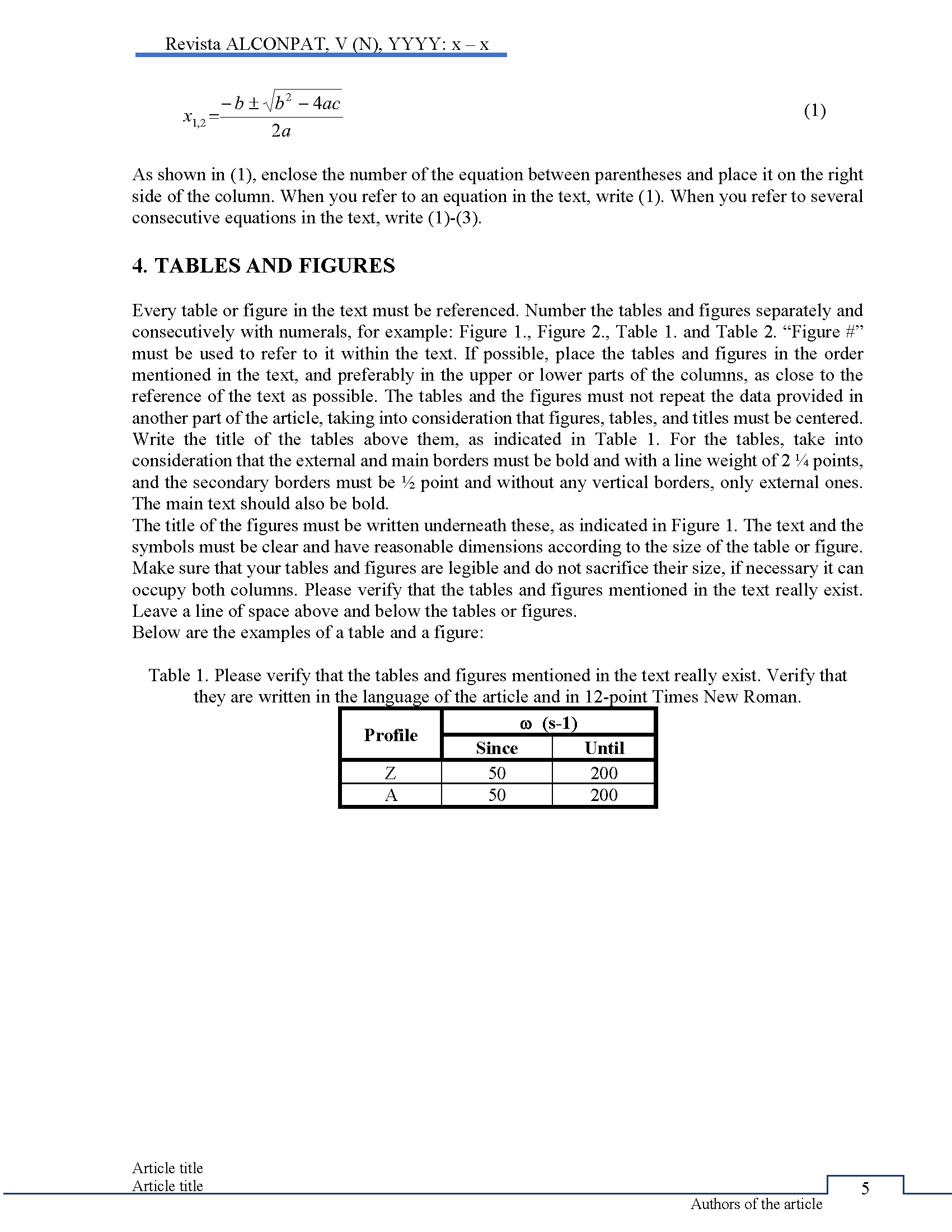
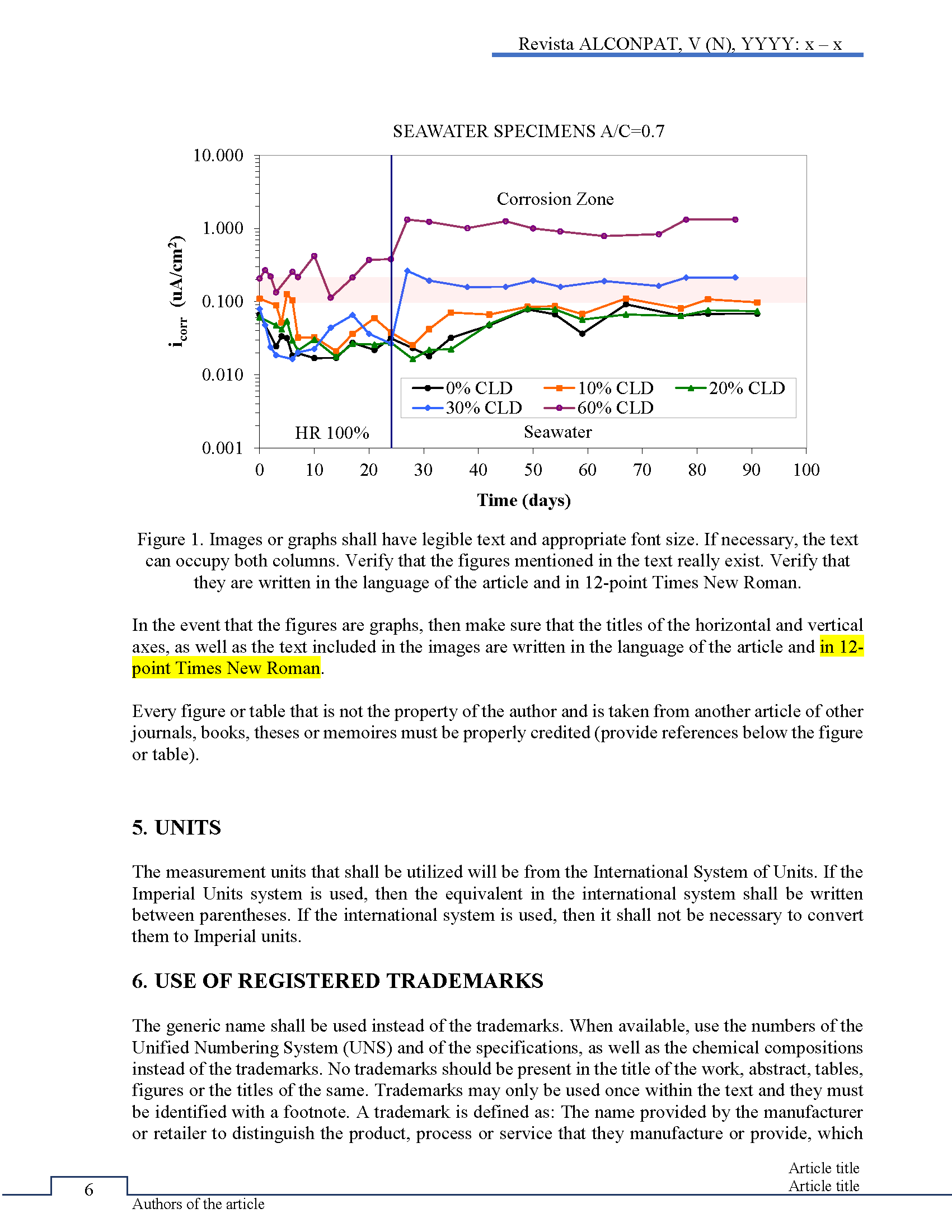
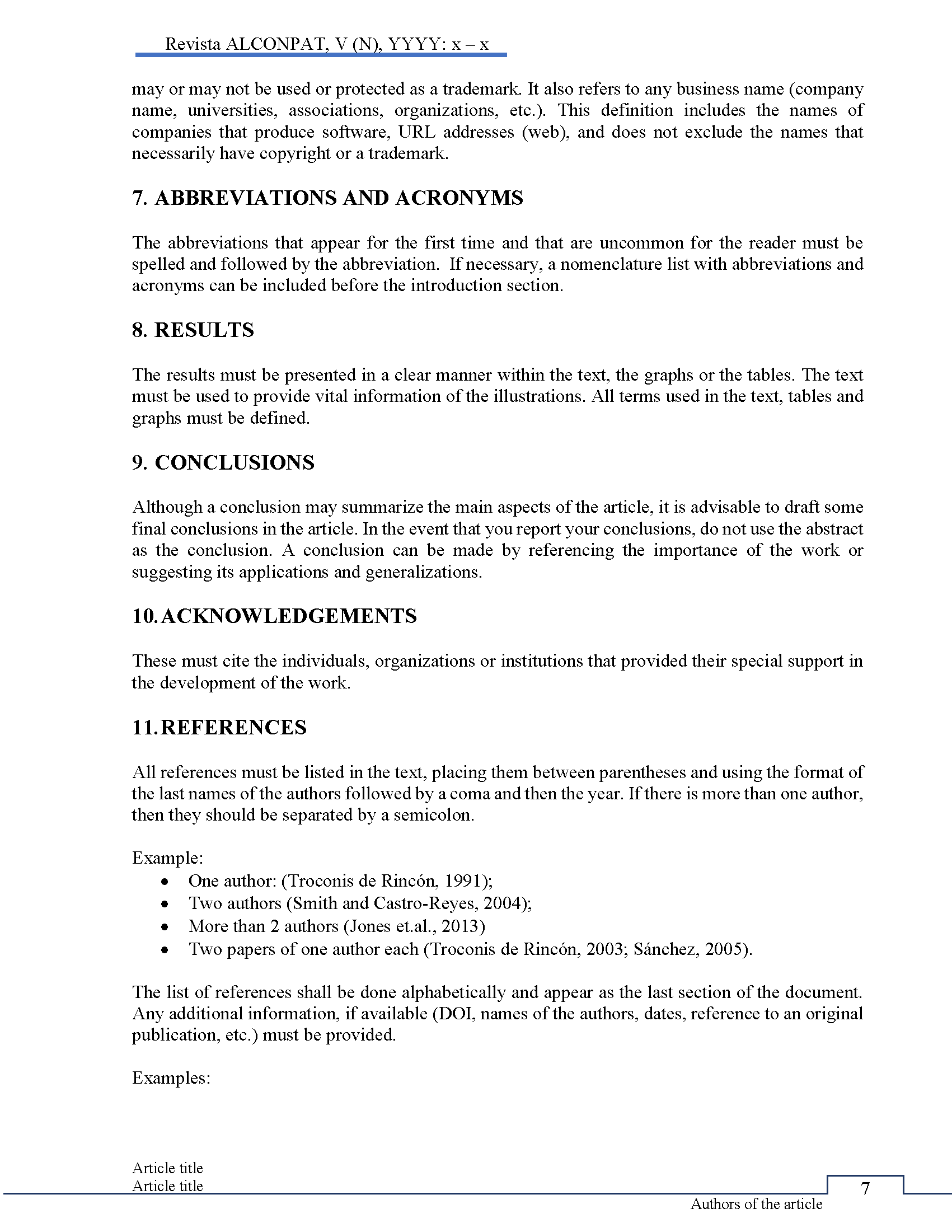
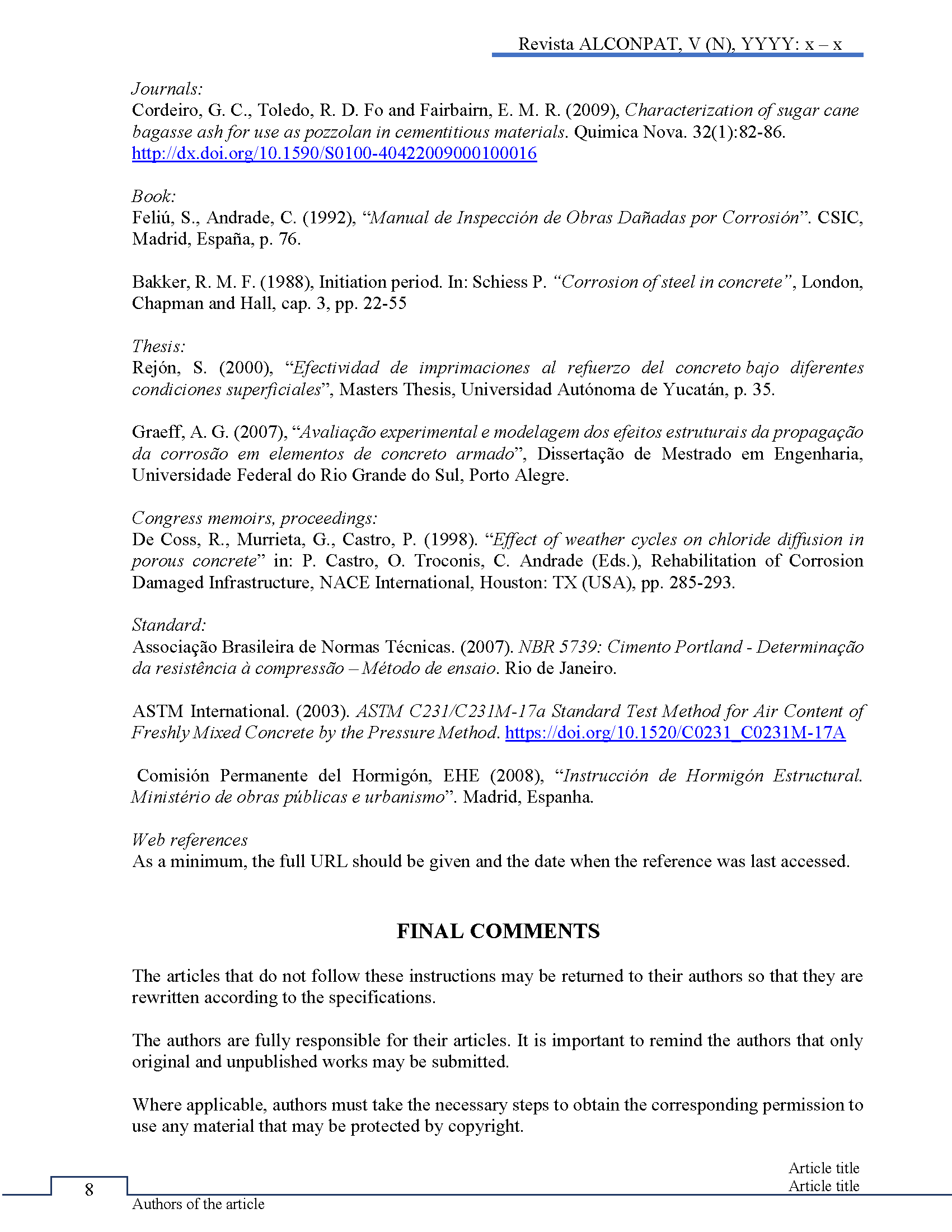
_______________________________
License in effect from September 2020
You do not have to comply with the license for elements of the material in the public domain or where your use is permitted by an applicable exception or limitation .
No warranties are given. The license may not give you all of the permissions necessary for your intended use. For example, other rights such as publicity, privacy, or moral rights may limit how you use the material.
The names and email addresses entered in this journal site will be used exclusively for the stated purposes of this journal and will not be made available for any other purpose or to any other party.
Search:
Additional Information
Legal information
Licensed by Creative Commons
Attribution 4.0 International
(CC BY 4.0),
from september 2020
The legend © 2021 ALCONPAT Internacional has been withdrawn in our articles (PDFs) from september 2020 to make consistent our open access with our copyright policy and our CC BY 4.0 license.
Attribution-NonCommercial-NoDerivs 3.0 Unported (CC BY-NC-ND 3.0),
until may 2020
Detection of Plagiarism
Raih Kemenangan Besar! Slot Online yang Sedang Viral Tahun Ini
5 Trik Main Slot Agar Lebih Gacor dan Untung Besar
Slot Jackpot Terbaru: Cerita Pemain yang Menang Puluhan Juta
Ini Dia Slot Paling Populer Bulan Ini, Jangan Sampai Ketinggalan!
Rahasia RTP Tinggi: Slot Online yang Paling Menguntungkan
Strategi Jitu Main Slot Tanpa Harus Modal Besar
Review Slot Paling Seru 2025: Visual Memukau dan RTP Fantastis
Cara Menang Slot Online: Kesalahan yang Harus Dihindari
Slot Terbaru 2025: Fitur Bonus yang Bikin Auto Maxwin
Pemain Ini Menang Besar di Slot Online, Begini Caranya!
Trend Slot Online 2025: Permainan Favorit yang Wajib Dicoba
Kenapa Slot Online Jadi Hiburan Populer di Kalangan Milenial?
Mengenal Slot Progresif: Jackpot Ratusan Juta dalam Sekejap
Reservation of journal title rights to exclusive use No. 04-2013-0117173330300-203
e-ISSN: 2007-6835.
Revista ALCONPAT began as an electronic magazine, for this reason it does not have a printed ISSN.
Revista ALCONPAT, Copyright © 2011 - 2025
